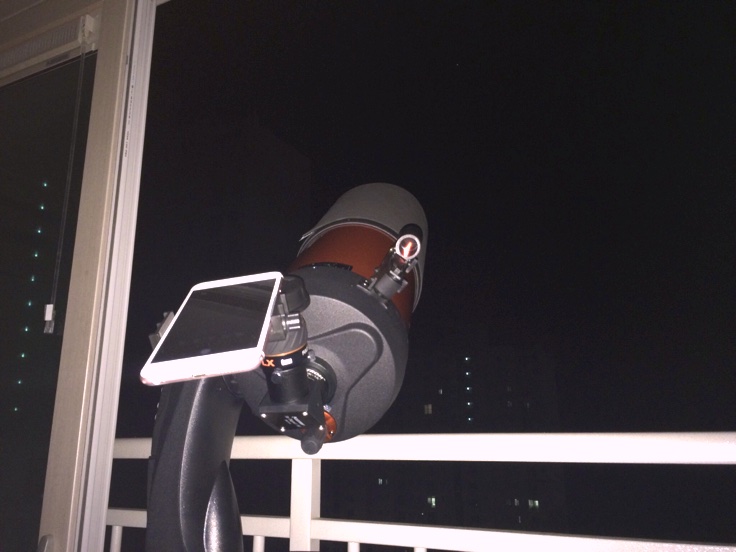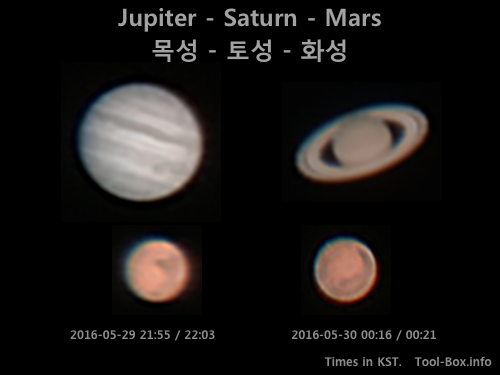Triple planet observation 2016
Posted by Wesley on
Photographing Mars out the window on a clear night
With a nearly perfect weather returning last night, I set out to point the telescope out the window once again. This time, I installed the Baader M&S filter as I planned last week. It was an excellent time to take photos of the planets - it was not only about 42 to 44 hours away from the closest approach of Mars in 2016, but Jupiter's Great Red Spot was in view. At this approach, Mars will be at its largest apparent diameter since November 20, 2005 and it won't be surpassed until June 19, 2018. For future reference, next closest approach will happen on July 31, 2018 and that itself won't be surpassed until the one in September 2035.

Jupiter, Saturn, and Mars observed on May 29 & 30, 2016
I planned just for Jupiter and Mars at first, but Saturn edged into the view at the left of the window after midnight. In the end I was able to take photos of all three planets in a single session similar to what I did a year ago, except that Venus was replaced with Mars. The filter did seem to work okay, giving me a better look at the clouds of Jupiter and the dark features of Mars.
Telescope: Celestron NexStar 6SE + X-Cel LX 9mm eyepiece
Device: iPhone 6S Plus (afocal)
Filters: Baader Moon & Skyglow
Location: Naju, Korea
Stacked with PIPP 2.5.6 and RegiStax 6.1.0.8
Jupiter (200 photos): 29mm - ISO 160 - 1/25s - f/2.2 @ 2016-05-29 21:54-21:56 KST
Saturn (200 photos): 29mm - ISO 250 - 1/15s - f/2.2 @ 2016-05-30 00:16-00:17 KST
Mars #1 (150 photos): 29mm - ISO 80 - 1/30s - f/2.2 @ 2016-05-29 22:02-22:03 KST
Mars #2 (300 photos): 29mm - ISO 50 - 1/40s - f/2.2 @ 2016-05-30 00:21-00:22 KST
Defined tags for this entry: astronomy, Celestron NexStar 6SE, iPhone 6S Plus, Jupiter, Mars, planet, Saturn, telescope
